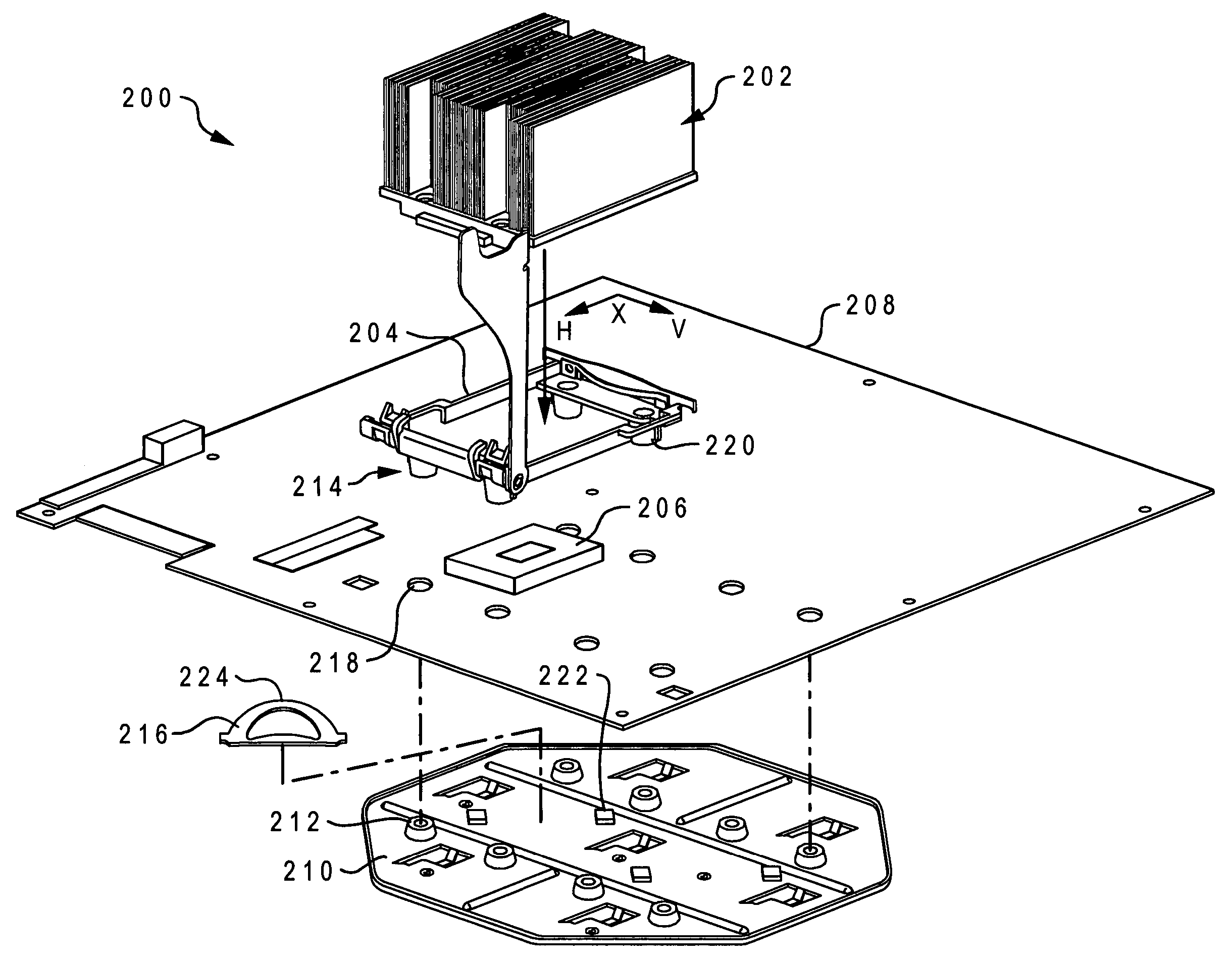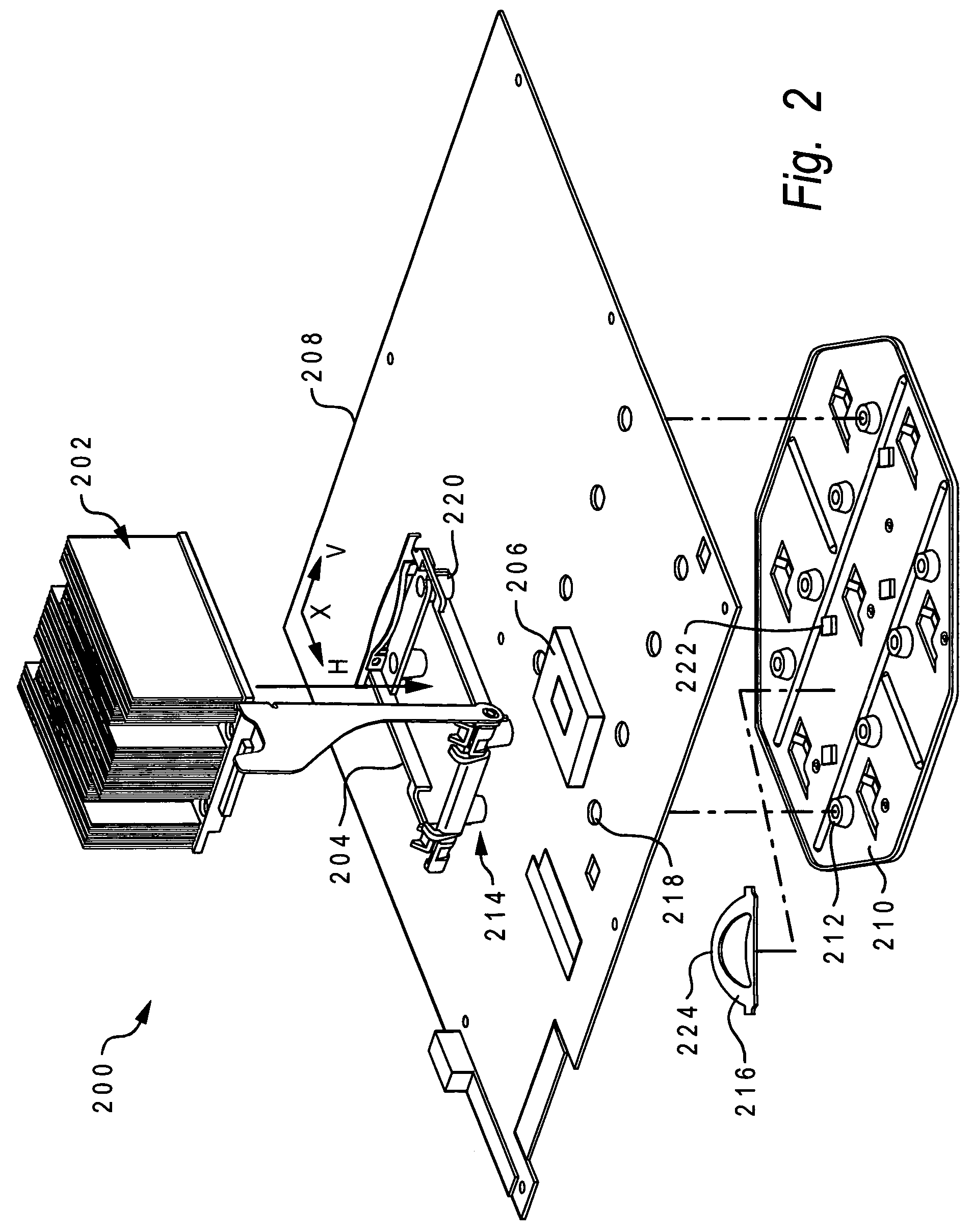Heat sink and chip sandwich system
a heat sink and chip sandwich technology, applied in the field of electronic devices, can solve problems such as unwanted fragility loads, and achieve the effect of minimizing the amount of pressur
- Summary
- Abstract
- Description
- Claims
- Application Information
AI Technical Summary
Benefits of technology
Problems solved by technology
Method used
Image
Examples
Embodiment Construction
[0020]With reference now to FIG. 2, there is depicted an exploded view of a chip sandwich system 200 in accordance with the present invention. A heat sink 202 is mountable on a retention module 204. Retention module 204 is oriented such that a chip 206 (preferably a Central Processing Unit—CPU chip), which is socket mounted on a circuit board identified as a mother board 208, is in the center of the retention module 204.
[0021]Positioned below mother board 208 is a mounting plate 210. Mounting plate 210 has multiple standoffs 212, which provide two functions. First, standoffs 212 provide a thread for receiving mounting screws that couple retention module legs 214 to standoffs 212, thus resulting in the coupling of retention module 204 with mounting plate 210. Second, standoffs 212 provide a limited gap between mounting plate 210 and a bottom surface of mother board 208, for reasons that will be described below when discussing the function of a wave washer spring 216.
[0022]As depicted...
PUM
 Login to View More
Login to View More Abstract
Description
Claims
Application Information
 Login to View More
Login to View More - R&D
- Intellectual Property
- Life Sciences
- Materials
- Tech Scout
- Unparalleled Data Quality
- Higher Quality Content
- 60% Fewer Hallucinations
Browse by: Latest US Patents, China's latest patents, Technical Efficacy Thesaurus, Application Domain, Technology Topic, Popular Technical Reports.
© 2025 PatSnap. All rights reserved.Legal|Privacy policy|Modern Slavery Act Transparency Statement|Sitemap|About US| Contact US: help@patsnap.com



